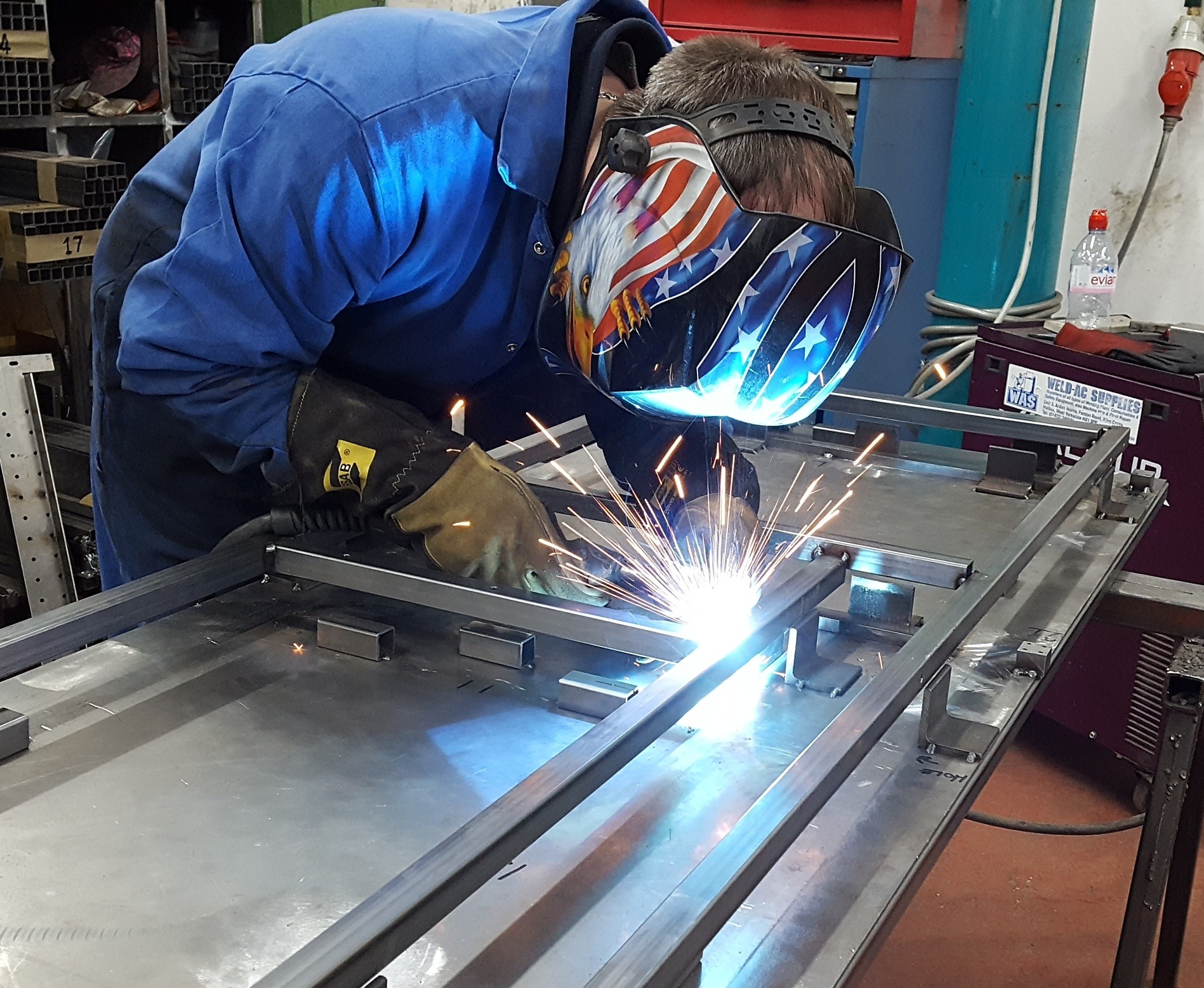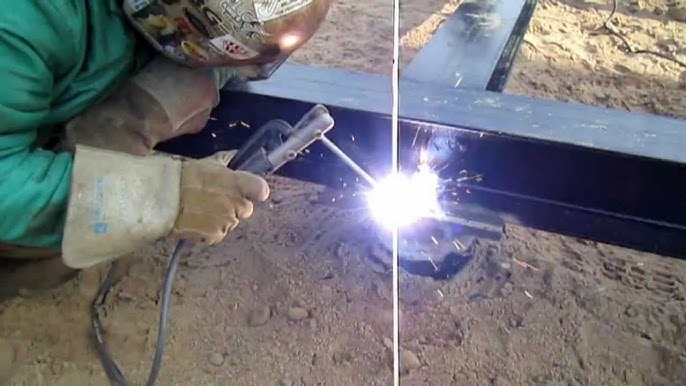Everything about Welding: Secret Insights Into Techniques and Ideal Practices for Success
Welding encompasses a range of techniques, each suited for specific materials and applications. Understanding these methods, such as GMAW, SMAW, and TIG, is important for attaining suitable outcomes. The ideal devices and safety and security practices can not be forgotten. As prep work and repairing play important duties in the welding procedure, grasping these aspects can considerably improve the top quality of the last item. What are the vital aspects that assure an effective weld?
Understanding Different Welding Methods
Welding methods incorporate a range of techniques, each fit to details applications and materials. Amongst the most typical techniques are Gas Steel Arc Welding (GMAW), Protected Metal Arc Welding (SMAW), and Tungsten Inert Gas Welding (TIG) GMAW, also referred to as MIG welding, is prominent for its speed and convenience, making it perfect for thin materials. SMAW, or stick welding, is favored for its simpleness and effectiveness in exterior environments, especially with thicker steels. TIG welding uses accuracy and control, making it ideal for detailed work and non-ferrous steels (Montana Mobile Welding and Repair Fabrication). Each technique has its unique benefits and considerations, enabling welders to pick the finest technique based on the project's needs, product type, and preferred results. Understanding these strategies is necessary for effective welding
Crucial Welding Tools and Tools
While numerous welding techniques require details abilities, the appropriate devices and devices are similarly crucial for attaining quality results. Important welding devices consists of welding devices, which differ depending upon the strategy-- such as MIG, TIG, or stick welding. Safety equipment, including aprons, headgears, and handwear covers, warranties safety and security and convenience during the procedure. Additionally, fixtures and clamps aid protect products in position, making sure accuracy in welds. Consumables like welding rods, wire, and protecting gas are likewise important elements that affect the high quality of the weld. Tools such as cutters and mills help with surface preparation and post-weld completing, adding to a professional result. Investing in high-quality devices eventually improves the efficiency and effectiveness of welding tasks.
Security Practices in Welding
Appropriate safety and security practices are vital in the welding sector to protect workers from prospective risks. Welders must put on ideal individual safety tools (PPE), including safety helmets with proper shading, gloves, and flame-resistant clothing. Sufficient ventilation is crucial to lower exposure to hazardous fumes and gases generated during the welding process. Additionally, employees ought to be learnt the appropriate handling of welding tools to stop accidents. Fire precaution, such as maintaining flammable products far from the welding area and having fire extinguishers conveniently offered, are required. Regular examinations of tools and offices can assist identify prospective hazards prior to they bring about crashes. By adhering to these safety methods, welders can create a much safer working environment and lessen dangers associated with their profession.
Preparing Products for Welding
Preparing products for welding is an important action that significantly influences the high quality and stability of the final item (Belgrade Welding). Proper preparation involves cleansing the surfaces to remove pollutants such as dust, oil, and corrosion, which can jeopardize the weld. Methods such as grinding, sanding, or using solvents are frequently used to accomplish a tidy surface area. Additionally, making certain that the materials fit with each other well is important; voids can bring about weak welds. It's likewise vital to consider the positioning and positioning of the components, as this will influence the simplicity of welding and the last result. Ultimately, picking the appropriate filler product and guaranteeing compatibility with the base steels is necessary for accomplishing solid, resilient welds
Tips for Achieving High-Quality Welds
Accomplishing top notch welds calls for attention to detail and adherence to best methods throughout the welding process. Correct joint prep work is important, making certain surfaces are tidy and cost-free from impurities. Picking the appropriate filler product and welding strategy based on the base metals is essential for optimal bonding. Keeping regular travel speed and angle while welding can avoid issues and promote uniformity. Additionally, controlling heat input is vital; extreme heat can lead to bending and compromised joints. If essential, consistently examining the welds throughout the procedure permits for instant changes. Lastly, using ideal post-weld therapies, such as cleaning and tension alleviation, can boost the longevity and integrity of the weld, inevitably making certain a successful outcome.
Fixing Typical Welding Issues
Welding typically offers difficulties that can influence the high quality and honesty of the end product. Typical concerns such as porosity, inconsistent weld grains, and getting too hot can emerge, each requiring certain repairing techniques. Understanding these issues is necessary for welders to improve their skills and achieve excellent outcomes.
Porosity Troubles Discussed
Although porosity can usually be ignored, it continues to be a vital problem in welding that can jeopardize the integrity of a finished product. Porosity describes the visibility of tiny gas pockets within the weld grain, which can damage the joint and lead to premature failing. This problem usually develops from pollutants, dampness, or improper securing gas coverage during the welding process. To minimize porosity, welders need to validate that the base materials are dry and tidy, utilize suitable shielding gases, and maintain regular welding specifications. Regularly checking the devices and environment can likewise aid determine possible problems prior to they manifest in the weld. Attending to porosity properly is necessary for accomplishing strong, long lasting welds that satisfy top quality standards.

Inconsistent Weld Beads
Irregular weld beads can substantially impact the high quality and toughness of a finished item. Numerous variables add to this problem, including inappropriate traveling speed, incorrect amperage settings, and inconsistent electrode angles. When the welder moves also swiftly, a bead might show up narrow and do not have penetration, while relocating as well gradually can cause too much build-up. Furthermore, utilizing the incorrect amperage can lead to either undercutting or excessive spatter, both of which compromise weld integrity. The welder's method, such as inconsistent lantern motion, can additionally cause irregular bead look. To minimize these issues, welders ought to concentrate on keeping stable, regulated activities and making certain proper equipment settings to achieve harmony in their welds. Uniformity is essential to achieving trusted and strong welds.
Getting Too Hot and Warping Issues
Excessive warmth during the welding procedure can cause substantial overheating and buckling problems, impacting the structural integrity of the workpiece. These issues typically show up as distortion, which can compromise placement and fit-up, making additional assembly challenging. Aspects adding to overheating consist of the selection of welding criteria, such as voltage and travel rate, along with the sort of product being bonded. To mitigate these problems, welders should preserve constant traveling speed and suitable heat input while checking the workpiece temperature level. Additionally, pre-heating or post-weld heat treatment can aid alleviate tensions created by quick air conditioning - Montana Mobile Welding and Repair Belgrade. Normal more info examination and adherence to ideal methods are crucial in preventing getting too hot and making certain the durability and integrity of welded structures
Frequently Asked Inquiries
What Are the Occupation Opportunities in the Welding Market?
The welding sector supplies varied career possibilities, including settings as welders, instructors, designers, and assessors. Specialists can operate in manufacturing, construction, aerospace, and vehicle fields, benefiting from strong need and competitive wages in different functions.
How Can I Boost My Welding Rate Without Compromising Top Quality?
To improve welding rate without compromising top quality, one ought to practice efficient strategies, keep tools, optimize settings, and boost hand-eye coordination. Normal training and looking for responses can also significantly add to achieving much faster, premium welds.
What Qualifications Are Available for Welders?
Many qualifications exist for welders, consisting of those from the American Welding Culture (AWS), the National Center for Construction Education and Research (NCCER), and various industry-specific organizations. These qualifications boost employability and show ability effectiveness.
Exactly How Does Welding Affect the Properties of Metals?
Welding influences the homes of steels by changing their microstructure, which can result in adjustments in hardness, ductility, and strength. Warmth input and cooling prices during the procedure considerably affect these material qualities.
Can I Bonded Dissimilar Metals With Each Other?
